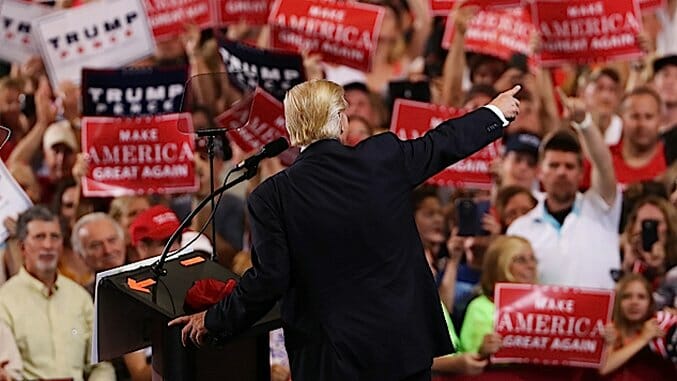Trump’s Unorthodox Digital Election Strategy was Divisive and Targeted

As Donald Trump’s inauguration as the 45th President draws closer, the reality of his incoming presidency is starting to hit people. Alongside the fear of the unknown is a nagging question: how did this happen? There’s been a lot of ink spilled on the topic, from the demography of Trump’s supporters, to their economic woes, their racial views, and alleged Russian hacking of the DNC. Yet for all the guessing and theorizing,Trump won, at least in part, because of the very effective digital strategy developed by his political team.
The campaign’s digital strategy used the same divide and conquer tactics towards the American electorate through data analysis that the candidate used in his rhetoric at rallies and in media appearances. First, the strategy aimed get out the extreme right vote for Trump. Second, it wanted to strategically depress the female and black vote. It worked—here’s how.
Due to the highly divisive nature of the GOP primary, it wasn’t until July that Trump and the RNC chair Reince Priebus (now the President-elect’s Chief of Staff) met to discuss how the finances and structural architecture would be organized. According to Joel Winston, the deal gave the candidate access to donors—but the RNC would pocket 80 percent of the raised funds.
The committee had Trump over a barrel, Winston claims.
At the time, the Trump campaign had virtually no digital infrastructure and hadn’t actively raised any money during the primaries. In fact, when the Trump campaign sent out its first e-mail solicitation in late June, about 60% of Trump’s emails were blocked by spam filters.
But with the added resources and access to the party’s professional staff, the campaign soon developed its digital arm: Project Alamo. The digital database and campaign operation was hatched from the mind of Brad Parscale, the campaign’s Digital Director. Parscale quickly found that promoting Trump’s candidacy was similar to marketing. And he found that Trump, a skilled self-promoter, was interested and engaged in Project Alamo and eager to learn about the marketing aspect of the plan.
Project Alamo worked quite well. Trump’s team identified extremist partisans and pursued them to get their enthusiasm up.The project also micro-targeted groups of voters likely to vote—perhaps unenthusiastically—for Clinton and flooded their social media feeds with negative stories in a strategy to depress turnout. This was easy to do. ProPublica revealed in late October that Facebook allowed advertisers to target by race at least until last fall.
The campaign used Facebook’s “dark posts” feature to target voters. The feature allows managed Pages to create posts and then leave them dormant for targeted publishing. This lets the Page administrators “manage delivery of ad content through audience filters” to “lookalike audiences.”
The campaign didn’t do this in every state, of course, but it did have targets from its internal polling simulator the “Battleground Optimizer Path to Victory.” These included Florida and Michigan, both of which states Trump won.
-

-

-

-

- Curated Home Page Articles By Test Admin October 21, 2025 | 3:10pm
-

- Curated Home Page Articles By Test Admin October 21, 2025 | 2:57pm
- Urls By Test Admin October 21, 2025 | 2:57pm
- Curated Home Page Articles By Test Admin October 21, 2025 | 2:55pm
-

-

-

-

-

-

-

-

-

-

-

-

-

-

-

-

-

-

-

-

-

-

-

-

-

-

-

-

-

-

-




































